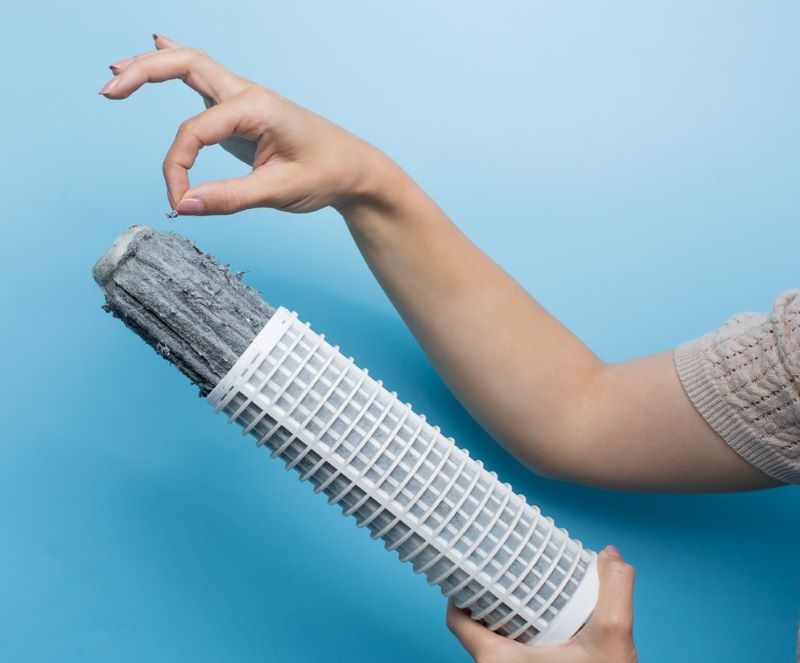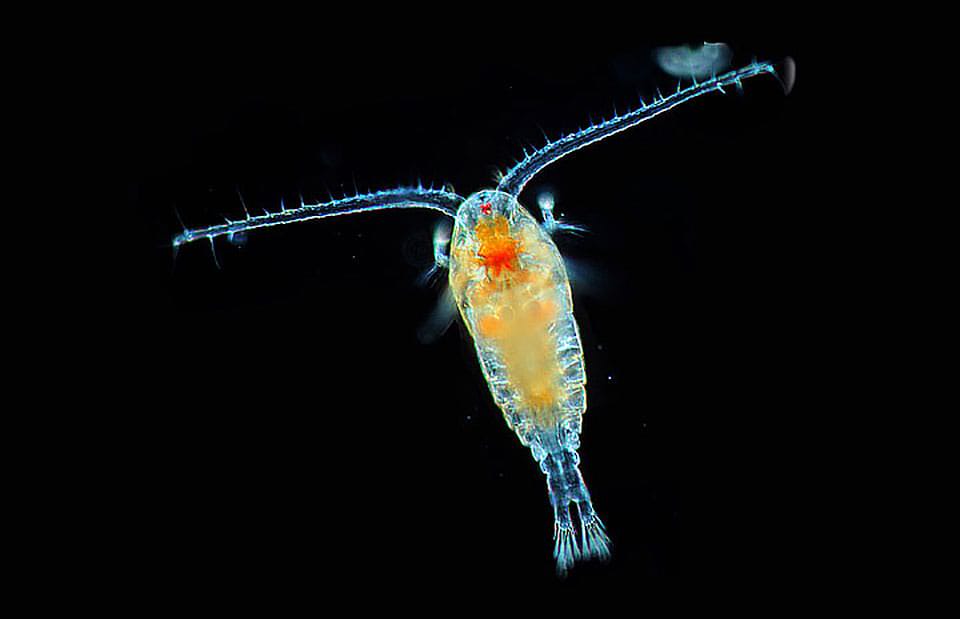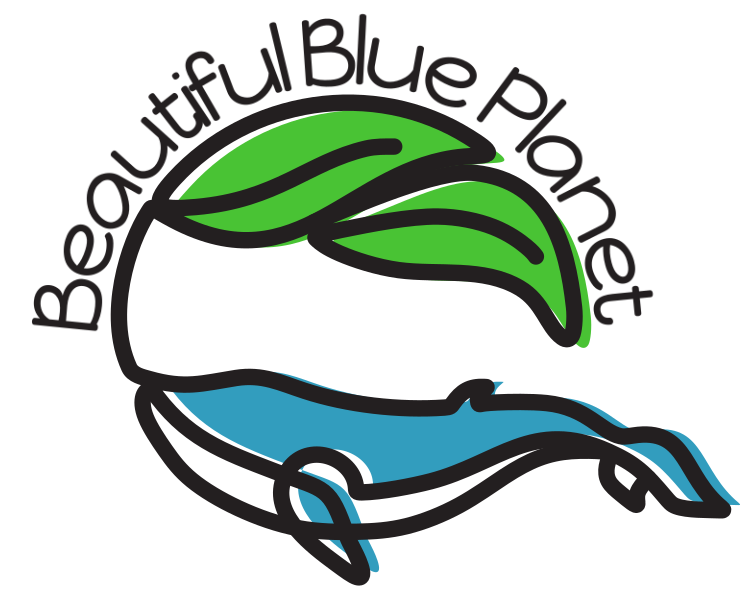There are three different ways you can significantly reduce the plastic microfiber pollution coming from your laundry. One is by using a washing machine filter to remove the microfibers from the wastewater from the washing machine. Another is by using a loopy ball that traps fibers in the wash for easy and proper removal. And a third is by using a mesh bag that, surprisingly, traps most of the microfibers.
These tools address the plastic microfiber problem that’s polluting the oceans and soils and getting into all marine life. It needs to stop before it’s really too late.
Filters that remove microfibers from laundry wastewater before it goes to the wastewater treatment plant or the septic system
Washing machine filters go between the washing machine and the and the machine’s drain to filter out microfibers from the wash water.
There are three brands of filters, all have been tested by several third-party scientific labs. And they each come with excellent microfiber removal rates. All are compatible with any machine.
- Filtrol is created by a small company in Minn. whose passion is the outdoors and protecting water bodies, and who’s committed to assuring a healthy world for future generations. Their filter was proven to remove about 89% of microfibers from laundry wastewater. It attaches easily to any washing machine, most reviews say. Though for some it’s a tad more complicated to install.
You remove the filter to clean it when it’s blocking water, like a dryer lint filter, and snap it back on.
Here are some Youtube videos to watch (How to Install the Filtrol , another one by a customer, and one about their new and improved version of the Filtrol. And there’s more.) The company’s coming out with a new and improved version on a filter that will increase the fiber catch rate. Their website has a nice, thorough white paper (find it on this page) that shows why microfibers have become such a problem.
The price at this writing is $159.99 and includes all fittings to mount it, except screws. Replacement parts are available. All are available from their website. It’s available on Amazon, too.
- Planet Care has a filter that was shown to catch 90% of microfibers from each wash. The filter is a reusable cartridge that you easily replace. You send the cartridges back to the company in a box they provide, and they’ll properly and responsibly refurbish them for their next use.
The current price is $61.45 and comes with all you need to install it.
- Lint LUV-R, from Environmental Enhancements in Canada, started out as a tool for reducing solids from washing machines to save septic systems and other non-mainstream wastewater set-ups. Once they heard the alarm about plastic microfibers getting into the environment from our washing machines they made a filter specifically designed for removing microfibers from washes.
It’s been shown to have an initial capture rate of 87% and after some lint builds up in the filter, it adds to the filtration and so increases the capture rate up to 100%.
The filter in the Lint LUV-R is a stainless steel mesh. It needs to be cleared out after 2-3 loads of laundry.
The price is $150.00. Available from their website.

A loopy ball to trap microfibers in your washing machine
The Cora Ball is a ball of plastic loops to put into the wash. Developed by a small team of ocean lovers and scientists, and inspired by corals and their filtering, the Cora Ball has been tested by third-party testers who determined that it removes 31% of the microfibers in your wash.
It works in two ways:
- by tangling up loose fibers so you can remove and dispose of them, and
- by reducing the number of fibers breaking off the fabrics. This helps clothing last longer in addition to keeping 31% of your microfibers out of waterways and soils.
It’s available on their, along with other handy tools for greener living. The cost is $42.00
A mesh bag for laundry items to go into the wash
The Guppyfriend Washing Bag is a synthetic mesh bag with a zipper enclosure that holds synthetic fabrics in the washing machine. The bag reduces friction between the items and reduces fiber breakage. This reduces microfiber release and prolongs the life of garments—an environmental benefit in the first place.
Third-party testing has found that the Guppyfriend Bag traps any loose fibers that do occur by over 90% and in most cases 100%. I find this compelling!
Plus, the Guppyfriend Bag is made of a special fabric that, while itself is synthetic, is so durable that no fibers are released from it.
This company is indeed dedicated to stopping the microfibers and microplastics we are sending into waterways and the ocean. They donate profits from Guppyfriend Bag sales to the STOP! MicroWaste non-profit organization which does educational work to increase awareness of the plastics and microplastics problem and the solutions. It’s also working to develop other solutions to reducing microfibers.
Be sure to read through the FAQs on their website to know how to best use their microfiber reducing bag. You can purchase one on their website or from other sites that sell eco-friendly products. But beware to not confuse Guppyfriend bags with other washing bags. This one isn’t on Amazon.
The price of one Guppyfriend Washing Bag from the company website is $34.95
We have tools to help each of us to reduce the magnitude of the plastic microfibers problem
There are several ways to reduce the synthetic microfibers that are released from our laundry into our waterways…and on down to the oceans.
If you reduce, or better, eliminate the synthetic fibers in the textiles you wear and use in your home; wash less and better; and use a filter, a Cora Ball, or a Guppyfriend Washing Bag, or a combination of these, you can really help reduce your household’s contribution to the laundry source of microfibers.
More and more synthetic fibers are being used in textiles. It’s hard to find sources of clothing and other textiles that are made of 100% natural fibers, but they are out there. And while we convert our wardrobes to all natural fibers (or if we simply cannot resist that pretty piece that does have a touch of spandex in it) we do have methods and tools to reduce the microfiber/microplastic we release into the environment. Remember: buy less, wash less, wash better, choose all natural fibers, and use filtering tools to remove what does gets into our laundry.

Related Reading:
What Are Microfibers? Where Do They Come From? why Are They a Problem?
Buy Less Clothing–Reduce Your Wardrobes Microfiber Pollution–Here’s Why
Wash Less & Wash Better to Reduce Microfibers and Save Your Clothes
Septic Systems Keep Microfibers Out of the Environment, Right?

